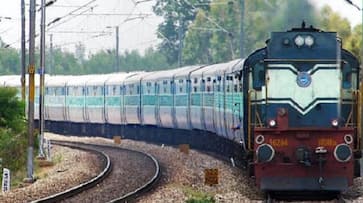Across road, rail, air, and water, Prime Minister Narendra Modi has tried to condense the country into a closely interwoven mesh and India, no doubt, has made significant progress in planning and executing connectivity programmes
If one were to summarise the four-and-half years of the Modi government in one word, the most appropriate description of what he has achieved may be “connectivity”. Across sectors — transportation, electronic networks and utilities — Prime Minister Narendra Modi has tried to condense the country into a closely interwoven mesh, promoting connectivity and contact.
In an August 2017 article ‘Build it and they will come’ in the Mint, World Bank economist Ejaz Ghani wrote, “It has long been recognised that infrastructure investment plays a key role in growth. It promotes rapid industrialisation through cheaper and more efficient movement of goods, people, and ideas across places.” Modi government has embodied this infrastructure push in this term, and this push has been 'phygital', encompassing the physical world as well as the new age digital networks.
Transportation is the most obvious area when one thinks of connectivity. Across road, rail, air, and water, India has made significant progress in planning and executing connectivity programmes.
The Bharatmala Pariyojana scientifically maps the point-to-point connectivity needs of various parts of the country, based on detailed expert studies. Budgets are being allocated to build multimodal infrastructure to optimise the cost of flows, be it passenger, commercial or cargo traffic. About 28,000km of national highways were built in the four years of the Modi government, which is about 30% of all highways ever built before the government took over. The speed of construction at 27km per day is highest in many years. Additionally, about 1.7 lakh kilometres of rural roads have been built at a pace of 134km per day. Just over 80% of all villages have road connectivity now, up from 56% in 2014.
Indian Railways has added about 10,000km of broad gauge track, a 10% bump on the total base. The Railways has worked on specific connectivity ideas like the bullet train between Mumbai and Ahmadabad, tourist-friendly trains like the Tejas, and the ‘engineless’ Train 18. The eastern as well as the western dedicated freight corridors — significantly delayed projects — are both beginning to go live in patches.
The UDAN programme has helped open up several small airports across the country. Air connectivity to small towns and cities has been made possible, with services to 25 new airports added. India is now the third largest civil aviation market in the world. The number of flyers has grown 15-20% every year in the past three years. 2017 was the first year when India saw 100 million flyers.
Waterways were never thought of a mode of transport in India. In fact, the first-ever commercial cargo vessel plied on river Ganga only this year. The Haldia-Varanasi National Waterway 1 becoming operational opens up great possibilities of port linkage for landlocked states upstream of the mighty Ganga. In all, 106 new national waterways have been defined in the past four years. Ghogha-Dahej ferry, connecting Kolkata with northeast through Bangladesh, and using sea route to send cars from Chennai to Gujarat has been significant new additions to water-based access.
The goods and services Tax (GST) is based on the goods and services tax network (GSTN), a system which brings all indirect taxes subsumed under the GST on one data platform. This tax big data will build over the years, allowing better traceability, compliance, prediction, cash forecasting, and even new financial products based on invoices and receivables. The GSTN will also over time create credit profiles for competent but relatively unknown businesses, which can expand their business based on positive tax compliance and behaviour. GST itself made India a single tax region, allowing significant cost reduction and ease of operations for commercial logistics.
The government has taken the lead in creating an electronic National Agriculture Market (e-NAM), with an aim to provide better national market access to farmers across the country. Hundreds of mandis are already onboard the platform. Though the full intended benefits of an increased market and better price discovery are yet to be realised, the direction is correct. The e-NAM needs more legislative and infrastructure push, with better centre-state coordination to truly achieve what it was set out to be.
India’s power grid is divided into several regional sections. Until 2013, various sections of this grid were not connected. Commissioning of two important transmissions lines between Solapur and Raichur plugged this gap between December 2013 and August 2014. The Modi government has since worked on significantly improving the capacity to pump power into south India from other parts of the country, which are richer in power generation sources.
All Indian villages are now electrified, with power lines (or standalone generation systems) reaching each village. Currently, the government is working to provide power connection to all interested and willing households across the country via the Saubhaya programme running at breakneck speed.
BharatNet, the national optical fibre network grid, now connects more than two lakh village panchayats. This is up from just a few dozen villages in 2014. Laying an optical fibre network can take better governance to the less accessible parts of the country with remote management and administration.
The ambitious city gas distribution programme aims to cover almost 400 districts in the next two-three years. Currently, 174 districts can avail piped gas facilities, up from 66 in 2014. The Modi government aims to create a gas-based economy for residential as well as commercial use.
Although benefits of this multi-pronged connectivity push have and will continue to accrue to all parts of the country, the Northeast states have perhaps gained the most. Hardly a matter of national discussions not so long ago, this region is now better accessible to the rest of India.
The biggest benefit of this connectivity drive, however, is psychological. As these programmes scale up, come to fruition and succeed, the general mindset on the individual as well as business mobility across the country will become positive. New economic opportunities will open up, and over time, it may become easier for citizens living outside of the metro cities to earn a respectable livelihood without having to leave their homes. The cost of doing business will reduce and predictability will increase, opening up new markets and customer segments.
Parag Khanna, international relations expert and author said in his book Connectography: Mapping the Future of Global Civilization: “Mankind has a new maxim — Connectivity is destiny — and the most connected powers, and people, will win.” The institutional, sustainable, and irreversible changes put in place by the Modi government will likely enable the country to realise this maxim.
Last Updated Dec 6, 2018, 10:46 AM IST









![Salman Khan sets stage on fire for Anant Ambani, Radhika Merchant pre-wedding festivities [WATCH] ATG](https://static-gi.asianetnews.com/images/01hr1hh8y86gvb4kbqgnyhc0w0/whatsapp-image-2024-03-03-at-12-24-37-pm_100x60xt.jpg)
![Pregnant Deepika Padukone dances with Ranveer Singh at Anant Ambani, Radhika Merchant pre-wedding bash [WATCH] ATG](https://static-gi.asianetnews.com/images/01hr1ffyd3nzqzgm6ba0k87vr8/whatsapp-image-2024-03-03-at-11-45-35-am_100x60xt.jpg)


